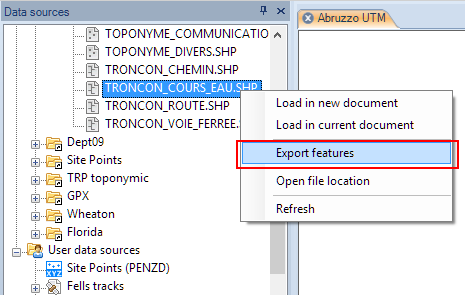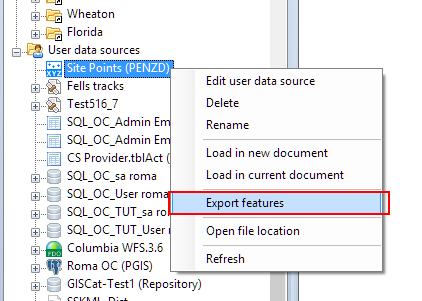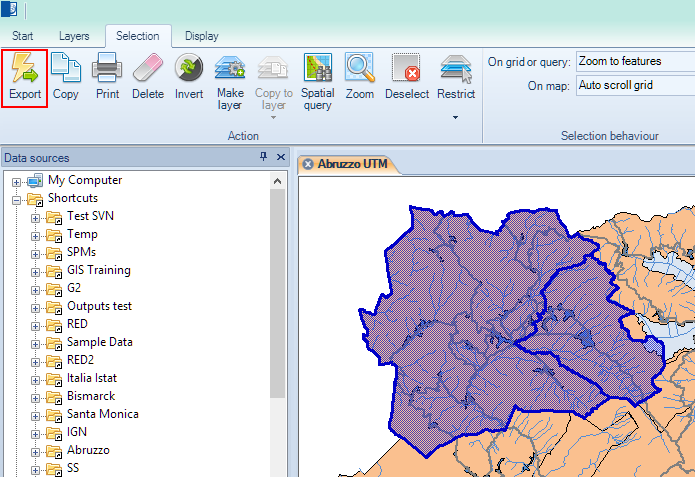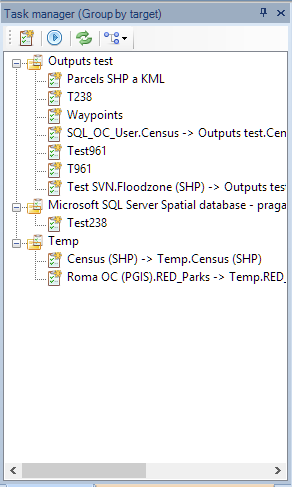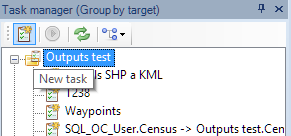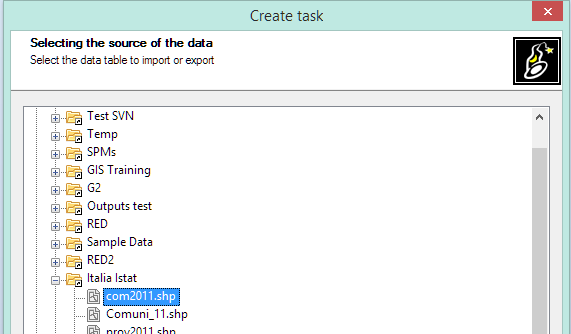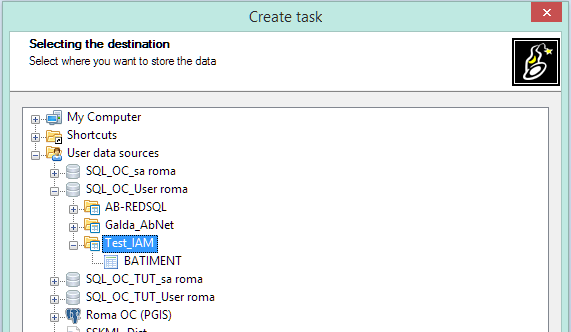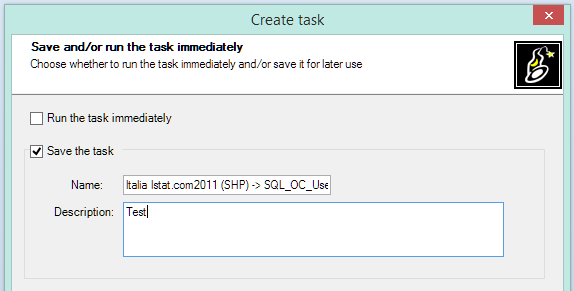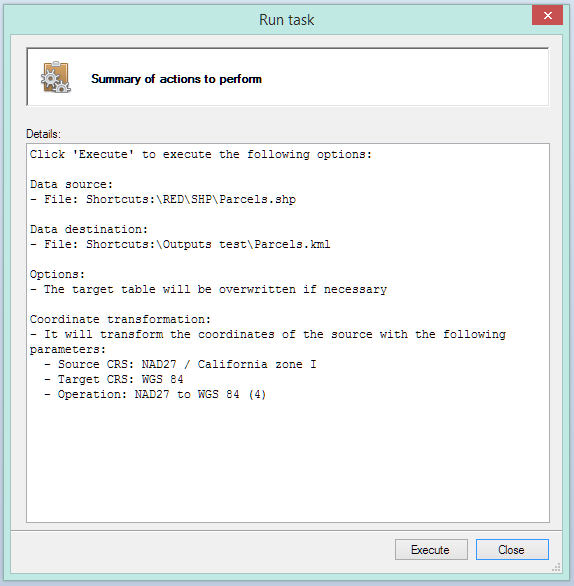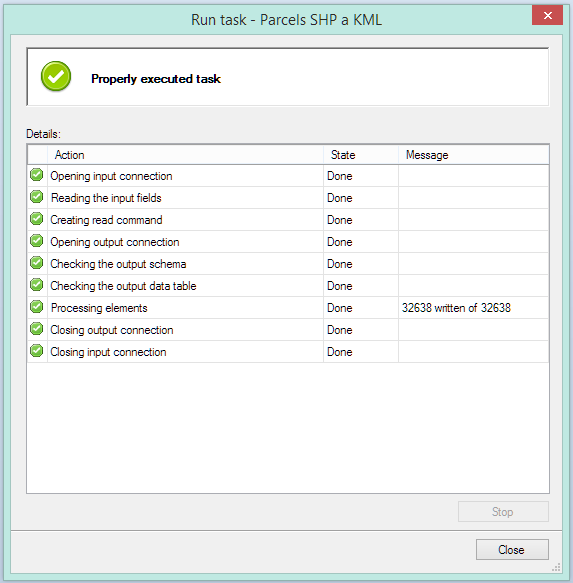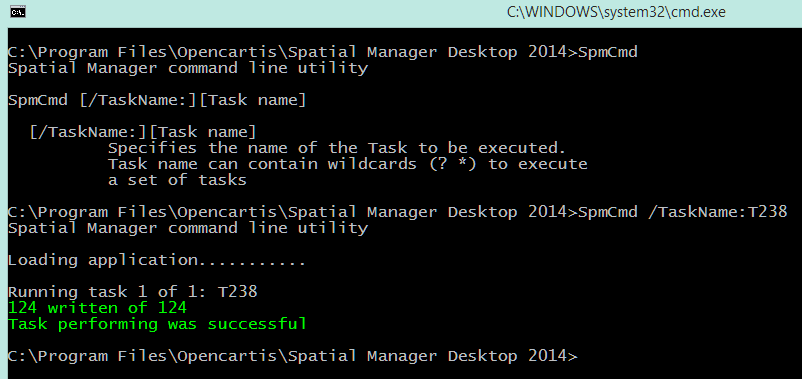Spatial Manager Desktop™ - FAQs: Import and export
Introduction
- Objective of this section
- To learn how to define import and export processes and their parameters, manage coordinate transformations and create and manage tasks
- Topics in this section
- Sources and targets: Layers, features selection and data sources
- Providers parameters: connection and set up
- Transforming the coordinates: source and target, favorite coordinate systems, searching in the coordinate systems table and transformation parameters
- Creating and executing tasks: using the task manager panel, creating new tasks and executing saved tasks
- Task management: task tree organization, task properties, execution of tasks on the operating system Command window and batch processes
How can I export Features in Spatial Manager Desktop™?
There are several ways to export Features and their associated data in Spatial Manager Desktop™
- Export a full Table: by right-clicking on the Table itself in the "Data sources" panel (drive/folder, Shortcut or UDS)
- Export a Layer in a Map: by selecting the Layer and using the function "Export features" in the "Layers" ribbon
- Export a Selection of Features in a Map: by selecting the Features in the Map and using the function "Export" in the "Selection\Tools" ribbon
In all cases the "Export" wizard will be launched to guide to through the steps necessary to export a set of Features
What are the Tasks in Spatial Manager Desktop™?
The Tasks are the way you can save any import/export process and its parameters, that have been designed to let you run, whenever you want, repetitive processes for import or export data tables. You can execute any Task directly from the application or from the operating system command window (this feature also lets you define powerful batch processes). You can access Tasks through the "Task manager" panel
How can I create a new Task in Spatial Manager Desktop™?
You can create new Tasks using the "New task" button, in the "Task manager" panel, to start the "Create task" wizard, but you can also create new Tasks when you are defining any import/export process (except when exporting a Layer or when exporting a Features selection) because you will then run the same application wizard
When you create a new Task, you will need to enter all the parameters to access origin and target data tables, the coordinate system transformation parameters (optional), the name of the Task and a description of the Task (optional). All this data is saved, into the "Task manager", as a new Task, until you want to delete it. Note that if you want to use a read-only UDS, you will be able to read data through this UDS (valid as origin) but not to write data (not valid as target)
How can I execute a Task in Spatial Manager Desktop™?
You have two ways of executing Tasks in Spatial Manager Desktop™
First way, directly in the application. Use the right-click menu over the Task name itself and press "Execute" (or by double-clicking on the Task name), in the "Task manager" panel. That will start "Run start" where you will firstly see all the data of the Task and, if you want to, execute it. When executing the Task you will see a window showing all the actions performed by the Task and, if you want to, you can cancel it before the end
Second way, through the operating system command window. You have to open a command window in the folder where the program is installed, execute the command "SpmCmd", its parameter "/TaskName:", and the name of the Task to execute, where you can use wildcards such as "*" to execute several Tasks from one only command. Every time a Task has been executed, you will get a resume line showing the number of Features exported, if the Task performing was successful, or any error message that could be produced in the process
